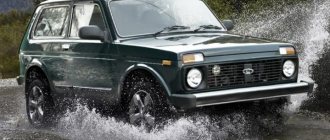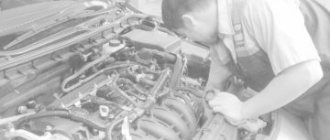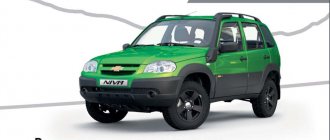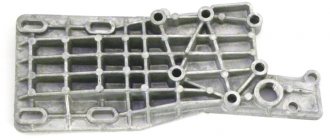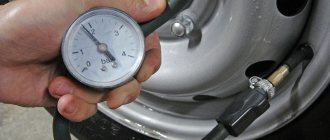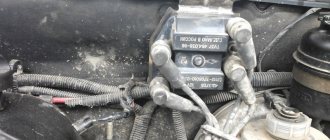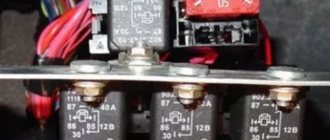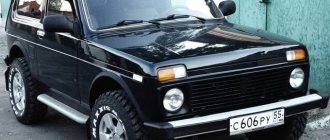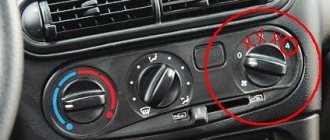A differential is a device designed specifically to transmit the so-called torque from a car engine to its wheels using transmission elements. A free differential, installed on vehicles during assembly at the factory, cannot affect the other when one of the wheels slips. Differential locking can help achieve different wheel speeds when necessary (for example, on poor, usually dirt roads). It increases torque on one of the wheels, usually the one with the best traction. To achieve this result, a self-locking differential is used. An alternative option could be a forced blocking method. It is important to understand whether it is worth installing a self-locking differential on the Niva, what this will do for the car and how to carry out the installation of the device.
Why do you need a self-block for Niva?
The presence of all-wheel drive in a car does not always give it the status of an all-terrain vehicle. Sometimes, due to the nature of their design, vehicles designed for off-road driving can become trapped on washed out roads. A self-locking differential is an important component of the car if the driver plans to use his Niva to drive on bad roads.
What is a self-block, or limited slip differential? This is a device that ensures wheel locking, and automatically, at the right time. It is an intermediate option between a full lock and a free differential. The self-block combines the capabilities of both of these devices.
Peculiarities
Just because a vehicle comes with all-wheel drive does not mean it has all-terrain capabilities. Often, due to their design features, SUVs fall into the treacherous traps of sandy and washed-out roads. Domestic cars are far from an exception. There is an assumption that the self-locking differential on the Niva will be an important addition, especially if the owner plans to actively use the car in off-road conditions.
The limited slip differential, or self-block, as the part in question is also called, provides wheel stop automatically at the required time interval. It can be described as an intermediate option between the free analogue and complete blocking. The capabilities of both devices are optimally combined in the self-block.
Types of mechanisms
There are two main types of self-locking differentials, which include several more subtypes. The first type is devices that lock depending on the angular velocities on the vehicle axles. They can be:
- disk;
- with viscous coupling;
- with electronic locking.
The second type is mechanisms that lock depending on the torques on the axes. These include worm differentials.
There are also center and cross-axle differentials. They involve the distribution of torque between the axles and wheels, respectively. Depending on the moment of distribution attributable to the axles or wheels, symmetrical and asymmetrical types of mechanisms are distinguished. On vehicles called all-wheel drive, three types of differentials are installed at once: two of them are interwheel, and one is interaxle.
On the Niva it is possible to install electronic, mechanical (it is a conventional mechanism combined with a viscous coupling), and pneumatic differentials.
The electronic self-block has a very big advantage. To use it, just press a button. It works in automatic mode, but only when the car is traveling at a certain speed, which is below a threshold value. The system turns off when the speed exceeds the set speed.
The pneumatic differential is a mechanism mounted on two axles. The advantage is compactness. In its work it uses pneumatic systems.
The mechanical self-block is the simplest in its design; it is cheaper than pneumatic and electronic devices. The mechanism consists of two semi-axial and two spacer couplings, pins and springs. Quite a reliable design, despite its simplicity.
Varieties
There are two main groups of self-locking differentials. The first type works depending on the angular speed parameters along the axes of the vehicle. In turn, these modifications are divided into several subtypes, namely:
The second type includes mechanisms that are locked in accordance with the torsional moments on the axes. This group includes worm modifications.
In addition, there are inter-axle and inter-wheel self-blocks. With their help, torque is distributed between axles or wheels, respectively. The design of the mechanism, which can be symmetrical or asymmetrical, directly depends on the moment of force dispersion. On all-wheel drive SUVs, three sets of differentials are installed simultaneously, two between the wheels, one between the axles.
Characteristics and selection rules
The choice of a self-locking differential is determined by the car model, its operating conditions, driving style and many other parameters. For example, a ball differential increases steering load, which actually changes the driving style of whoever is behind the wheel. This is mainly felt when making U-turns and turns, but can lead to breakdowns of transmission components.
If you approach the choice of a self-block correctly, then you need to take into account which axle of the car the mechanism will be installed on, since the number of splines for different models is different - twenty-two or twenty-four.
The marking on the device packaging will tell you whether it can be used for a given car brand. The blocking coefficient also varies: for example, 0.5 or 0.7. These numbers show the amount of torque transmitted. What to choose is up to the driver.
Forced
Differentials are often of a planetary design.
It is a worm type gear. They can be of two types - axle gears or driven and driving gears, or satellites.
The drive gears can be located parallel or perpendicular to the axle shafts. The differential can be locked either manually or automatically. In this case, self-locking systems are used.
Pros and cons of installing a differential on Niva
If you compare the self-block and the standard Niva differential, you can identify the negative and positive aspects of replacing the latter. First, about the advantages:
- Increases the vehicle's cross-country ability, making it suitable for driving on steep, slippery and uneven sections of the road.
- It is mounted instead of the original differential and does not change the design of the car. It is better to carry out the installation at a car service center, but it is quite easy to do it yourself.
- The full differential operates automatically during the driving process, without requiring additional actions or any driver training.
How to install a self-block?
A self-locking differential is an independent product that is installed in place of the standard one. You can perform this procedure either independently or at a car service center. This is a matter of personal choice, if you have the skill and understanding of how everything works, then you can do it yourself. I installed a self-block at a car service center, and a similar procedure four years ago cost me five grand.
In this case, the determining factor was the need to make the necessary adjustments, set the required gaps, use special stands and other subtleties that I do not know. In any case, after installing the correct self-block (more on this below), no problems arose during its operation.
DIY self-block installation instructions
To install a self-locking differential on a Niva, it is not necessary to contact a car service center. It is quite possible to do this with your own hands, provided that the person has a good understanding of the structure of the car. The type of differential and its installation location are not particularly important.
First you need to decide on the place where the work will be done; it should be spacious enough. Using several jacks, you will need to lift the Niva, dismantle the wheels, then drain the engine oil from the gearbox housing into some container and remove the drive axle drive. To do this, just use a spanner to unscrew all the nuts securing the front cover to the gearbox housing, remove the cover and gasket.
Now it is necessary to reliably and efficiently carry out the operation of dismantling the axle shafts, which is very difficult to do without a special puller. The metal is clamped on rotary slots, which requires a lot of effort, which not every person has enough. Dismantling the axle shafts is carried out as follows:
- Unscrew all the bolt nuts on the axle bearing mounting plate.
- The brake mechanism is fixed. This can be done using bolts or wire. If the mechanism is not secured, the brake lines may come off.
- The axle shaft itself is removed. With sufficient skill, this can be done by hand, but it is better with the help of a puller.
Then you need to change the bearings. This will require a hydraulic press. It will help ensure that the holder fits onto the shaft, and with fairly high accuracy. To replace you need:
- Unscrew the hub bearing nut and remove the bushing. Unscrew the nut securing the lever to the steering knuckle.
- Remove the locking plate and unscrew the lever from the steering knuckle.
- Having disconnected all the fasteners, separate the knuckle and the hub with the brake disc. Remove the bearing by first holding the steering knuckle in a vice. During assembly, the bearing is put on using a press.
After the clearances in the main gear are adjusted using special washers of variable thickness, you can begin assembling the unit. Adjusting the gaps is quite difficult, and you will need special equipment, but to ensure accuracy you can use a steelyard. To work with it, wind one end of a 1 m long cord around the flange and secure the other end to the scales. By pulling the device in the winding, you will need to record the turning moment.
To ensure proper operation of the gearbox, the parts are usually sealed before the halves are assembled. In its absence, malfunctions may occur during operation, as well as failure of certain spare parts. After applying the sealant, you need to wait a while for it to harden. Then new oil should be poured into the gear housing. All sealing joints that were damaged during dismantling, as well as those that show signs of oil leakage, must be completely replaced with new ones. Now you can start assembling all the mechanisms in reverse order.
After completing all the replacement and installation of parts, you must check the operation of the devices that provide vehicle braking. Their malfunction may affect road safety.
The feasibility of such an action as differential locking on a Niva depends on why the driver needs it. If you need to move through difficult areas, you will need it. If a car enthusiast intends to drive on a normal asphalt road, then installing a self-locking differential on the Niva is hardly worth it. Which self-block to choose and where to place it depends on the driver’s preferences.
My review of Dak and Racing
It just so happened that I had to use the two mentioned types of self-blocks. Their price at the time of purchase was almost the same - ten thousand, the installation is also the same, but the result is completely different.
If the DAK failed after about six months, and not in intensive use, but when driving on ordinary forest roads, then the Togliatti one (val racing) is still working.
Maybe I was just unlucky, but I have repeatedly come across reports that there are problems with the quality of the metal in the production of DAKs. So think for yourself.
There are a huge number of opinions about whether a self-block is needed at all, and the most polar ones - from “why is it needed” to “is absolutely necessary.” As always, the choice is a personal matter and everyone must make it themselves.
Again, I will only express my opinion.
It seems to me that everything depends on how and where you move in your car. If you go to the country or mostly on asphalt, then you definitely don’t need a self-block.
The situation is approximately the same if your hobby is off-roading and you are engaged in conquering impassable roads. Here, such “half measures” as self-locking will not work and here you need a full manual differential lock.
Types of limited slip differentials
Disk . No preload, which means it doesn't have smooth tension. The drive wheels begin to rotate simultaneously, but without tension, all starts will be accompanied by impacts on the steering wheel.
Screw . Unlike a disk one, there is already a smooth tension, which does not affect the steering wheel so much. Such self-locking differentials are often installed on front-wheel drive cars, for example, VAZ 2110.
For the VAZ 2121 SUV, the most popular are DAK and DAN:
DAK (Differential Automatic Krasikov). Belongs to the family of automatic ball differentials and provides full locking and evenly distributes the load. According to reviews, its service life is reduced when operating without load, and a hum may appear. An excellent option for installation in a plug-in bridge.
DAN (Nesterov Automatic Differential). This continuation of the DAK allows not only to differentiate the angular speed of the driving wheels of the car during its maneuvers, but also to gently redistribute torque from the engine to the driving wheels.
Friction
This is nothing more than a symmetrical system equipped with special disks.
Several of them are rigidly connected to the unit body. The rest of the disks are connected to the axle shafts. This system operates on the friction force arising due to the difference in the speed of rotation of the axle shafts. If the speed of one of the wheels is higher, then some discs will also increase the frequency or speed. Partial blocking of differentials on the Niva will occur due to the friction force between these elements. The free wheel will increase torque.
Comparison of differential locks on Niva (VAZ 2121)
The first video review compares the cross-country ability of SUVs in deep snow. The following participants took part in the test: Niva with DAK, with DAN and without differential lock. To ensure the accuracy of the tests, all three cars had the same wheels with Bear tires.
Based on the results of the races, you can notice an obvious difference between the competitors:
- Niva with DAK coped with the task.
- The Niva, without a self-locking brake, not only could not drive through deep snow, but also skidded, trying to overcome the snowdrifts along the previously left track.
- Niva with DAN passed the test best of all.
Another comparison of self-locking differentials was carried out by another group of VAZ 2121 car enthusiasts. This time the tests took place in the summer, on sand and mud.
SUVs with different “blockages” tried to climb the mountain, as a result:
- With DAK - I managed to climb the slope on the 3rd attempt.
- WITH DAN - I managed to climb the hill only on the 5th try.
Despite this, the expedition participants noticed that on the way to the test site, the Niva with DAN confidently drove under its own power, unlike many other SUVs.
During the break, they said that much still depends on the manufacturer and the gap in the design of the device. The minimum gap allows you to work more accurately; torque is transferred to the second wheel after a slight shift of the first. It also plays an important role which lock will be installed on the front wheels and which on the rear wheels.
What differential lock do you recommend for the Niva VAZ 2121? Maybe because of the high price (about 10 thousand rubles) there is no point in using it at all? Let us remind you that other important factors also influence the cross-country ability of an SUV.
Niva is a car that has been produced since 1977. It differs from other domestic cars in that it has permanent all-wheel drive. Few car enthusiasts know what this means, although they have heard a lot about this feature of the vehicle; a diagram of the device can easily be found on the Internet. All-wheel drive in the Niva is equipped for all 4 wheels, and the center differential is locked. The mechanism consists of a gearbox, a transfer case designed for 2 stages, and cardan shafts located in the front and rear of the machine. This also includes the front and rear axles.
When the engine starts to rotate, an impulse is sent to the gearbox and transfer case, after which the torque is distributed to the front and rear axles simultaneously. Afterwards, the gearboxes are activated, and behind them the front and rear wheels of the Niva begin to rotate. Torque causes 4 wheels to rotate at once, which is why it is called full torque. But the rear wheels still drive.
4X4 VYATKA › Blog › Which self-block to choose for UAZ/Niva?
Our store's permanent assortment includes self-blocks from 5 manufacturers, the most popular among jeepers:
Let’s make a reservation that in this article we are not considering forced blocking, but only the so-called “self-blocking”. In nature, there are several types of self-locking differentials: screw, cam, disc, ball, etc. In the Russian market, the most popular and widespread are screw-type locks and mechanical Blokka locks. It would be more correct to call the latter automatic unlocks, but this does not change the essence. It is worth adding that other types and types of locks not discussed in this article, in our opinion, have significant drawbacks or are not recommended at all for installation and purchase on SUVs. And this is not a matter of markups and greedy traders. Our company has had its own car service center since the first day of its existence, and we have installed all the locks currently available on the Russian market and have clear feedback from consumers on them. Replacing a defective lock under warranty is half the battle, but who will pay for the work to replace it and for spare parts and consumables? That's why we sell and install only products that we trust ourselves. And it should serve as a signal to an attentive buyer that some locks are sold only exclusively on the website of the alleged manufacturer and cannot be found anywhere else on the Internet.
Block - mechanical self-locking.
A long-established brand, reliable products for specific tasks.
Features of BLOCK locks
1)
Unlike screw self-blocks, the Blok is always 100% rigidly locked when moving and unlocks when the gas is released.
2)
Suitable for you if you operate your SUV in extreme off-road conditions (asphalt 20-30% no more).
3)
Works great when hanging.
4)
Installed in the standard differential instead of satellites
5)
Easy installation - you only need to adjust the gap between the lock and the differential housing.
6)
It makes a noise when working.
7)
Sensitive to the condition of the transmission - backlash and misalignment can very quickly damage the locking system.
As you can see, these locks have pros and cons. If clicks in the transmission do not bother you and you use the car on serious off-road conditions, choose Blokka.
The Val Racing is one of the most reliable screw locks on the market.
Val-Racing interlocks have been on the market since 2005. This is one of the oldest and most reliable companies producing locks.
Features of Val-Racing locks
1)
A little outdated, but still reliable 8-satellite circuit
2)
High quality processing of parts
3)
Each lock has a serial number, which indicates strict quality control
4)
The design uses an original preload clutch which, after wear, can be replaced and the preload restored
5)
Assembly The locking body goes along the flange of the main pair.
Due to this, the locking body has an all-metal shape 6)
3 types of preload: Standard (5-6 kg), Tourism (7-8 kg), Sports (9-10 kg)
7)
In our practice, not a single warranty case in 10 years of work and installations
INSUV - screw locks.
They have been produced for about 5 years and have already received positive feedback from customers.
Features of INSUV locks
1)
New 10-satellite circuit
2)
Own development
3)
Preload from 6 to 10 kg (indicated on the block)
4)
Low cost with high quality
5)
The main advantage of these self-blocks is the cost is lower than that of the popular manufacturer Val-Racing.
Why does Niva need blocking?
Wheel differential is a mechanism that allows a car to rotate its wheels at different speeds, which does not mean changing gears, but changing when cornering, when one wheel describes a small diameter and the other a large circle. In the absence of a differential, the wheels in the Niva would begin to slip, which could result in damage and rapid wear of the rubber.
When the vehicle moves on a flat road surface, the thrust from the engine is distributed evenly to the 4 wheels.
When at least one wheel slips, which often occurs on an icy road, the differential puts more force on the slipping wheel. In other passenger cars, such a device involves installation on a drive-type axle. Niva has it in other areas:
- on the rear and front axles;
- in the center between the axles, located near the gearbox and axles.
DAK - Krasikov automatic differential
This mechanism is built on a planetary principle. The role of satellites here is given to ball chains. Under normal conditions, the balls move along the channels and distribute torque equally to the wheels. If the wheels have different resistances, the chains will close and the differential will be locked.
The DAK system reacts not to the difference in angular speeds, but to the difference in load on the wheels.
Suitable for most models, including the Niva-21214 car. This type of differential lock is installed exclusively on the front axle of an SUV.
How to enable differential lock on Niva
The Niva and its various modifications allow you to operate 3 differentials at once. Thanks to this factor, the vehicle’s cross-country ability increases significantly when driving in rural areas. The forced locking format involves connecting the driving wheels together, causing them to spin at different speeds. This approach allows you to use the maximum possible traction characteristics of the engine, which are transmitted to the wheels.
To lock the differential on the Niva, the manufacturer has provided a clutch for the locker. When forced locking is turned on, the wheels become interconnected and rotate in the same mode. When the inter-axle lock is activated, the axles located at the front and rear interact and distribute traction to all wheels. This mechanism is easy to use, which is confirmed by the unique cross-country ability of the Chevrolet Niva.
Advantages and disadvantages
To find out which is the best self-locking differential for the Niva, you need to compare the advantages and disadvantages in relation to the standard analogue of the car. The benefits include:
Disadvantages of installing a self-locking differential on a Niva:
Various modifications of self-blocks have their own nuances, depending on the manufacturer, type of development, and installed components.
When to use and how to disable blocking
It is preferable to enable forced blocking in various modifications of the Niva in the following situations:
- The blocking must be turned on in advance if you have to overcome a difficult route.
- On sharp climbs uphill or when driving downhill.
- While crossing terrain with a top layer of sand.
- When you have to drive on snow drifts or an icy road.
Wheel locking is not necessary when driving quietly on a flat road within the city. Grip on asphalt surfaces will be decent, and traction will be distributed evenly by default.
What are users saying?
As reviews indicate, it is not advisable to install a self-locking differential on a Niva in all cases. If the driver intends to constantly operate the vehicle on serious and difficult off-road conditions, installing a self-block makes sense. When driving regularly around the city or on a country road, this idea is irrelevant. The existing factory analogue copes well in such cases on its own, and it has a longer service life.
In addition, users recommend installing the mechanism themselves only if the owner has the appropriate skills and a clear understanding of the design features of the vehicle. Otherwise, use the services of a car service. The choice of the configuration of the self-block and the location of its installation depends solely on the preferences of the owner of the machine.
Source
Rules for applying blocking on Niva
To ensure that the locking mechanism lasts for a long time, use the following rules:
- It is necessary to switch the transfer case when the Niva does not move.
- The differential can also be engaged while the vehicle is moving.
- To ensure efficient and long-term operation of the device, it is advisable for the Niva driver to turn on the lock from time to time. Once a week in winter is enough.
Where is the lever responsible for switching located? Pay attention to the area between the wings located in front, there are 2 levers there. One makes it possible to change gears at the gearbox, the other successfully controls the transfer case.
The basis of the transfer case is a gearbox, which includes 2 stages. The control lever comes directly from it, you can move it forward and backward - this is how the gear is changed on the Niva. The direction of movement of the lever to the left and right allows you to activate the differential lock and vice versa to disable it.
Screw block
Worm and screw locks are often confused, since the screw lock is the same Torsen product, but in a more modern design. It is simpler in many ways and quite popular. Essentially, this is a worm gear with a longitudinal arrangement. Its design feature ensures the occurrence of several friction pairs at once. The worms expand in such a way that they close both lengthwise and crosswise.
This unpretentious lock for the Niva 2121 easily replaces the standard planetary gear. It blocks the wheels by 70%, but that's enough. Preload is created by springs inside the housing. As they wear out, the lock does not lose its properties - it is simply connected a little later. It is important to take into account only one thing - it is practically useless when hung diagonally.
An example of such a thing is a blocking produced by VAL-Racing in the rear axle or front gearbox of a Niva 21213 produced before 2002, as well as in the rear axle of a Niva Chevrolet:
In the SV-PARTS store, of course, differential locking for the Chevrolet Niva is also available:
Useful tips
To use the lock installed on the Niva effectively, use the following recommendations from experts:
- When driving on good quality road surfaces, install the front transfer handle at the front and the rear at the rear.
- The front handle is moved back if the road becomes slippery. Once the slippery area has been passed, switch the levers to normal mode.
- If the Niva is stopped, the lock may not engage when the clutch is depressed. This occurs due to the alignment of the teeth with the gear teeth. What should you do in this case? Moving as if on a turn, engage the lock. The differential will turn and the gear teeth will come closer to the teeth. If turning off is difficult, do it while the vehicle is moving, maintaining a minimum speed and squeezing the clutch.
How the cross-axle differential lock works on a Niva is clearly shown in the video:
Assembly of the unit
When you have decided on the best self-locking differential for the Niva, you can begin assembling the unit. Initially, they adjust the gaps, which is not so simple. For this purpose, special washers of different thicknesses are used. Alternatively, accuracy is determined using a steelyard. One edge of the cord (about a meter in length) is wound around the flange, and the second is fixed to the scales. Pull the device in the winding, not forgetting to mark the turning point.
To ensure correct functioning of the gearbox, the elements are sealed before assembling the parts. If this is not done, soon after installation defects may appear, even to the point of complete breakdown of some parts. After treating the surfaces with sealant, wait until it dries completely. Next, the gearbox is filled with new oil. All sealing components with deformations and a hint of leakage are replaced. The mechanisms are assembled in a mirror order. After the replacement and installation of parts is completed, you should check the operation of the brake unit. This is very important, since malfunction of parts affects road safety.
What are we dealing with?
What is a differential or as it is sometimes abbreviated as “diff”. Why is it needed?! The Latin word “differentia” and the similar English word “different” are translated into Russian almost identically: “difference” or “different”. There is another definition of differential - planetary gear.
The purpose of this element is to transmit the power of the power unit through rotation without losing it on the axle shaft with the wheels attached to them. The differential causes them to rotate at different speeds depending on driving conditions. Inside a turn, the wheel makes much fewer revolutions than one that goes along a long radius.
If in place of the “planetary” there was an ordinary solid axle, the probable parasitic circulation of power would guarantee a decrease in control over the car, loss of traction with asphalt, significant wear of the transmission, incredible fuel consumption, etc. The differential “links” the drive of one axle, removes the “parasitic” phenomenon, without loss of power.
An interwheel differential is present in almost all cars. It is usually located on the drive axle. There may be two or more axes to which the planetary gear distributes the incoming power flow.
How to use the cross-axle differential device lock
Before you start using the cross-axle differential locking mechanism, you need to find where the corresponding shift lever is located on the Chevrolet Niva. In the car interior of this SUV, between the front seats - driver and passenger, there are two levers with handles of different lengths:
- the first is for changing gears (it has a longer handle);
- the second is for controlling the transfer gearbox (it has a shorter handle).
Now let's look at the entire process of controlling the blocking process of the cross-wheel differential device.
- As soon as the vehicle enters the off-road lane, it should be stopped.
- Turn on the differential locking process using a lever with a short handle - move it to the left side (if everything is done correctly, the corresponding lamp indicator will light up on the dashboard).
- Drive off-road with the differential lock engaged.
- As soon as the vehicle drives onto a flat road, the lock should be turned off - move the lever with the short handle to the right.
- You can continue moving.
All the described actions for turning on the differential device blocking are effective when the weight is unevenly distributed between the wheels of one axle.
Disabling the differential locking process on a Chevrolet Niva is necessary when driving on a good road. Otherwise, excessive loads on the vehicle transmission will lead to increased fuel consumption and rapid wear of the tires on the wheels.
Experts pay attention to the following nuance: blocking the inter-wheel differential device will not increase the adhesion force of the wheels to the road surface.
Coefficient, preload and other nuances
The Niva 2121 is equipped with permanent all-wheel drive, and therefore, in addition to two inter-wheel differentials, it has a third - an inter-axle differential, distributing the moment between the front and rear.
Also interesting: Niva Chevrolet alarm connection points
A regular “free” differential is not always enough for a Niva owner. An SUV is bought to drive like a mother-in-law on different terrain and surfaces: dirt, snow, ice, etc. Often a car ends up with two wheels on a grippy surface and the other side on a slippery texture. In such a situation it is easy to “lose” him. Blocking will allow you not to worry about this.
When choosing a block, you need to take into account two important points - blocking coefficient and preload. The first denotes the ratio of torque on the lagging wheel with good grip and on the leading wheel, which has already lost contact with the road. The free differential has a coefficient of 1.
And preload is a certain moment of blocking inside the body of the product even before the moment when it may be required. Mostly in modern self-blocks, preload is created by washers. It can be customized to suit almost any driver's requirements. The washers can be replaced as they wear out, and the differential will continue to serve faithfully for many more years. While the teeth of the “worm” and the clutches of the “disc” design wear out sooner or later, the preload decreases.
True, it is important not to “overdo it” here - excessive preload greatly increases the load on the differential itself and increases the wear of all transmission elements.
